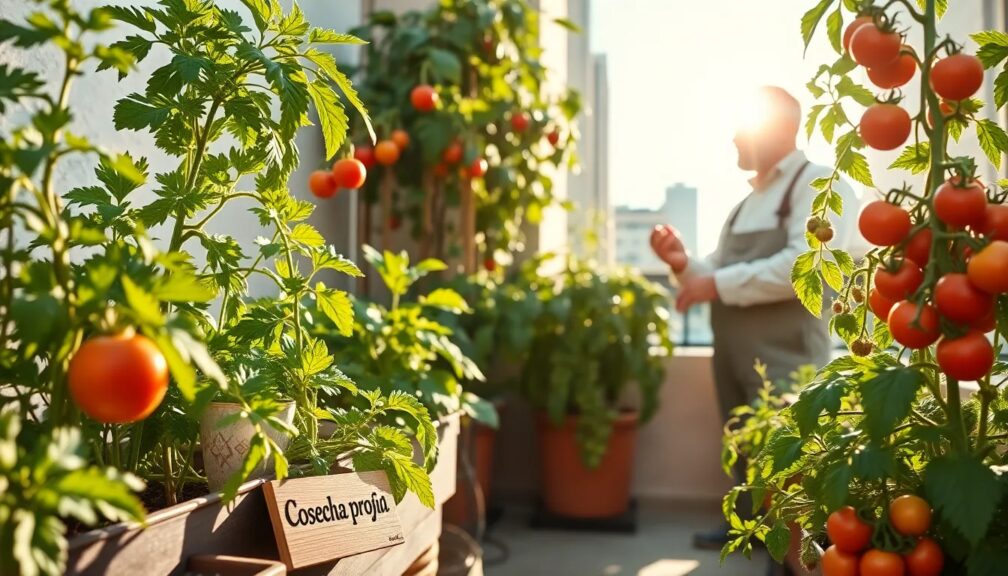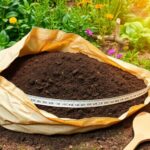What vegetables are cheaper to grow than buy

Welcome to Our Guide on Vegetables That Are Cheaper to Grow Than Buy
In the quest for both economical and sustainable living, growing your own vegetables is a rewarding practice. Not only does it offer the satisfaction of nurturing something from seed to harvest, but it can also be a cost-effective alternative to purchasing produce at the supermarket. In this article, we delve into the world of home gardening to uncover which vegetables are less expensive to cultivate in your backyard compared to buying them off the shelf. Whether you're a seasoned gardener or a green-thumbed newbie, our insights will help you maximize your garden's yield and your grocery savings.
What is the cheapest vegetable to grow?
Discovering the most cost-effective veggie for your garden could transform your approach to homegrown produce and revolutionize your culinary experience. Imagine slicing into a ripe, sun-kissed tomato that cost you just pennies to nurture. Or picture a crisp salad crafted from greens that required minimal investment other than your loving care. The journey to find the ultimate budget-friendly vegetable is not only about saving money—it's about the satisfaction and empowerment that comes from sustainable living.
The contenders for the title of the "most economical vegetable" are numerous, each with their own merits. Picture the humble potato, a staple in many diets, which can be grown in abundance with little more than a patch of earth and some patience. Then there's the versatile carrot, eager to push its vibrant orange hue through the soil with minimal fuss.
Let's not overlook the leafy greens—spinach, lettuce, and kale—each one a powerhouse of nutrition, rapidly growing to provide continuous harvests throughout the season. And for those with a penchant for flavor, the herb garden offers an array of choices, from basil to cilantro, that can elevate your meals while keeping your wallet comfortably full.
Here's a sneak peek at what these garden champions can offer:
1. Exceptional Yield: With the right care, certain vegetables can produce an impressive bounty from a small plot.
2. Minimal Inputs: Some crops require less in terms of fertilizers and pest control, reducing your need for costly gardening supplies.
3. Continuous Harvest: Vegetables that can be picked repeatedly or regrow after cutting give you more bang for your buck.
As you delve deeper into this green-thumbed quest, you'll uncover tips for maximizing your garden's output while keeping expenses to a minimum. You'll learn about companion planting to naturally ward off pests, enriching your soil with homemade compost, and timing your plantings to take advantage of your local climate.
By the end of this journey, the revelation of the cheapest vegetable to grow will not just be a simple answer—it will be a transformation in how you view your garden, your plate, and perhaps even your grocery budget. The anticipation builds as you come to realize that the knowledge of cost-effective gardening is within reach, promising a future where the fruits of your labor are as plentiful as they are affordable.
So, don your gardening gloves and prepare to be amazed—because the secrets to an efficient, productive, and economical vegetable garden are about to unfold before your eyes. The harvest is waiting. Are you ready to reap the rewards?
Is it cheaper to buy vegetables or grow them?
Imagine strolling through your backyard garden, plucking ripe, juicy tomatoes right off the vine, and enjoying the crisp crunch of a fresh cucumber. Now, pause and ask yourself the silent question that's been lurking in the back of your mind: "Am I really saving money by growing my own vegetables?"
The answer might surprise you. It's true that upfront, the price of seeds and gardening tools can seem daunting. But consider this: a single tomato plant can yield a generous crop, capable of producing dozens of tomatoes throughout the season. When you compare that to the cost of organic produce at your local supermarket, the figures begin to lean in favor of home gardening.
However, it's not just about the dollars and cents. The sense of self-sufficiency, the joy of gardening, and the nutritional benefits of fresh, home-grown veggies are factors that no price tag can capture.
As you delve into the journey of home gardening, you'll uncover hidden costs and savings alike:
1. Soil quality and the initial investment in compost and fertilizers can add up.
2. Water usage will likely increase, though savvy gardeners can mitigate this with rainwater collection systems.
3. The time invested in tending to your garden is invaluable, but for many, it's a therapeutic hobby rather than a chore.
Yet, the thrill of harvesting your very own produce and the potential for long-term savings make the endeavor tantalizing. The secret lies in knowing which vegetables offer the biggest return on investment and mastering the art of sustainable gardening practices.
Have you ever pondered the cost of organic vs. non-organic produce? Or what about the hidden environmental toll of commercially farmed vegetables? The answers to these questions and more will not only inform your wallet but also shape your impact on the planet.
Stay tuned, because we're about to embark on a cost-benefit analysis that will arm you with the knowledge to make an informed decision. Are you ready to discover the true cost of bringing nature's bounty to your plate? The journey ahead is ripe with insights that could very well change the way you think about each meal you prepare.
What is the cheapest form of vegetables to purchase?
Unlock the secret to boosting your health without breaking the bank! You're about to discover the ultimate hack for maintaining a nutritious diet while keeping your wallet happy. Imagine savoring a rainbow of vegetables, each bite not just a punch of flavor but also a victory for your finances.
The answer lies in one word: seasonality. When you choose vegetables that are in season, you're opting for produce that's abundant, flavorful, and best of all, affordable. Picture walking through a bustling farmers' market, the stalls brimming with the vibrant hues of seasonal harvests, prices astonishingly low as the supply peaks.
But wait, there's a twist – the local markets aren't your only ally. Have you considered the power of the humble frozen aisle? Here, the treasures of peak season are flash-frozen, locking in both nutrients and low prices.
Let's not forget the unsung heroes: canned vegetables. Often overlooked, they are the silent sentinels of nutrition and economy, waiting on the shelves for their moment to shine in your pantry.
As you stand at the crossroads of healthy eating and frugal living, remember that the path to affordability and sustainability is paved with the choices you make. And just when you think you’ve learned it all, there's more to this narrative – strategies to make every dollar stretch further, and every meal an ode to cost-effective nutrition.
Stay tuned, and you'll never look at your shopping list the same way again. The journey to an enriched lifestyle and thrifty vegetable shopping starts now!
What is the best vegetable to grow for money?
Unlock the secrets to garden gold with the ultimate crop that can turn your green space into a greenback haven! Imagine cultivating a vegetable that not only thrives with minimal fuss but also commands a premium price at market. The quest for the most lucrative veggie has tantalized green thumbs for ages, and we're here to lift the veil on this verdant venture.
Before revealing the top contender, let's consider what makes a vegetable a real moneymaker.
- Market Demand: What are consumers clamoring for? You want a vegetable that's in vogue, flying off farmers' market tables and into the kitchens of the health-conscious and gourmet chefs alike.
- Growth Rate: Quick turnaround times mean faster cash flow. Plants that go from seed to harvest in a blink are ideal for rapid revenue.
- Yield: High production crops ensure you get the most bang for your buck from every square foot of soil.
- Resilience: A crop that can resist pests and disease slashes costs and heartache, ensuring a robust harvest.
The answer lies just around the corner, and it could revolutionize the way you view your veggie patch. It's a crop that's been gaining popularity, not just for its nutritional value but for its versatility in the kitchen and beyond. Chefs are singing its praises, and consumers can't seem to get enough. This plant isn't just a vegetable; it's a phenomenon that could anchor your garden's economy.
Curious yet? You should be. This crop is not just a plant, it's a statement. It's a ticket to joining the ranks of savvy gardeners who've turned their love for soil and leaf into a lucrative symphony of taste and profit.
Stay tuned, and we'll unveil the king of the cash crops, the vegetable that could transform your garden into a veritable treasure trove. Whether you're a seasoned horticulturist or a budding grower, this revelation is bound to make you look at your plot with fresh eyes and a brand-new strategy. Ready to dig deeper and uncover the green beneath the green? The journey to your most profitable garden ever starts now.
What vegetables are cheaper to grow than buy reddit
If you're scrolling through your feed looking for that next game-changing life hack, you may want to pause here. Imagine slashing your grocery bill and enjoying the freshest produce you've ever tasted. The secret? It's all about knowing which vegetables are cost-effective to grow at home versus those you should continue to pick up at the store.
First off, let's talk about tomatoes. These versatile fruits (yes, scientifically speaking, they're fruits!) have a reputation for delivering a massive return on investment when grown in your own garden. Forget those pallid, flavorless varieties you've resigned yourself to over the winter. Homegrown tomatoes burst with flavor and require minimal upkeep after planting.
Next on the list is lettuce. Why pay premium prices for organic greens when a single packet of seeds yields a continuous crop? Lettuce is perfect for beginners and can be grown in small spaces. Plus, nothing beats the convenience of stepping outside and picking fresh leaves for your salad.
1. Herbs like basil, cilantro, and parsley
2. Root vegetables such as carrots and beets
3. Green beans—easy to grow and prolific producers
4. Peppers, both sweet and spicy for variety
Each of these can be grown for a fraction of the cost of store-bought, and the flavor difference is unmistakable. Moreover, these plants don't require a vast expanse of land; many thrive in containers on patios or balconies.
Now, consider the long-term savings. Investing in perennial vegetables like asparagus or rhubarb means a bounty year after year from a single planting. And let's not forget the sheer joy of harvesting your own produce. Not only does it cut costs, but it also provides a sense of accomplishment and a connection to your food that money simply can't buy.
But wait, there's more. What if I told you that in addition to saving money, you could also be improving your health? Home-grown vegetables are packed with nutrients, especially when picked right before consumption. The longer produce sits on a shelf, the more nutrients it loses.
Feeling the itch to get your hands in the soil yet? Don't let the opportunity to transform your culinary experience and your budget pass you by. The time to start planning your garden is now, and with a little effort, you'll be reaping the rewards in no time. Don't miss out on the chance to become a green thumb savant and the envy of your neighborhood. Get ready to dive into the world of home gardening, where the freshest, tastiest, and most cost-effective vegetables are just a planting season away.
Consejo final: Focus on vegetables that require minimal care and yield multiple harvests, such as tomatoes, zucchini, and leafy greens. By growing these, you'll maximize your savings and enjoy fresh produce from your garden. Wishing you successful gardening and plentiful harvests.
 Is it OK to mix potting soil with garden soil
Is it OK to mix potting soil with garden soil Can you reuse potting soil from year to year
Can you reuse potting soil from year to year Is topsoil better than compost for vegetable garden
Is topsoil better than compost for vegetable garden How much does a 40 lb bag of compost cover
How much does a 40 lb bag of compost cover Can you put too much compost in a garden
Can you put too much compost in a gardenIf you want to know more about similar articles like What vegetables are cheaper to grow than buy you can visit category Gardening Tools.